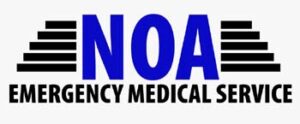Content
Sober Living housing is focused on helping people find and use the tools and principles of recovery – following addiction treatment or in addition to addiction treatment. They provide vital structure, support and fellowship to men and women. Residents cover their own expenses, including rent and utilities, interview and vote on who enters the house and must adhere to drug screenings. House meetings are typical and there is no clinical staff within each sober living house. Now that you have answers to the questions, “what is a halfway house?
- Through support groups or just living amongst one another, residents will feel empowered by one another to become the best version of themselves that they can be while prioritizing their sobriety.
- Each sober living house will have its own specific set of house rules, and these rules are more detailed than the resident requirements listed above.
- As a result, these will allow young men to learn and practice a range of skills for their well-being to live a balanced and healthy life.
- The option that sober living homes provide is one that is significantly useful to many in recovery.
- A halfway house is typically designated for people who are coming out of incarceration and have completed a drug treatment program.
Recovery programs filled the gap by initiating abstinence and including detoxification. Let’s say you or a loved one has almost completed an alcohol or other drug addiction treatment program. Or maybe you’re going to start an outpatient program, but living at home isn’t a sober, supportive environment for you.
Avoid Relapse During Addiction Recovery
As we’ve said many times already, there’s no one answer to, “How do sober living homes work? Some programs might only accept clients who have already completed an inpatient stay at a connected facility, or they might give them a higher priority on the waitlist. Some sober living situations offer life skills classes where you might learn to cook, for example. Others will have extensive career support, helping their residents get back out into the workforce. Most of them will encourage participation in a relevant support group or 12-step program.
- Jessica graduated from the University of South Florida (USF) with an English degree and combines her writing expertise and passion for helping others to deliver reliable information to those impacted by addiction.
- To maximize generalization of findings, very few exclusion criteria were used and very few residents declined to participate.
- Remember that every single sober living arrangement is unique in the degree of what they provide, and the inclusive and optional amenities included in the home.
- It’s important to know that sober living houses are not treatment centers.
Sober living homes offer a safe living environment for individuals working on abstaining from alcohol and other drugs. These homes do not provide formal treatment services; however, they often encourage or mandate residents to participate in continuing treatment resources and mutual aid groups such as Alcoholics Anonymous (AA). To remain a resident, one must comply with house rules, including maintaining abstinence, covering rent and other living fees, participating in chores and attending all house meetings. Halfway houses offer an opportunity for individuals leaving correctional facilities to have a smoother transition into their new lives. These homes provide a safe and sober living environment, and access to wrap-around support, like job training, educational assistance, financial planning, mental health services and more. Halfway houses tend to have less structure and less privacy than sober living homes.
What is a sober living house?
A halfway house is typically designated for people who are coming out of incarceration and have completed a drug treatment program. There are other forms of halfway houses that are intended for those who live with severe mental health disorders. The length of stay for a patient in a sober residence usually depends on the length of time they have been using substances.
The staff doesn’t provide any clinical or medical services, but many residents attend outpatient treatment or participate in recovery-based groups while they live there. This support system allows residents to avoid the isolation that can sometimes come with returning home while in recovery. It further provides an environment to support recovery from substance abuse and addiction for those who are emerging from rehab. Sober living homes provide a combination of freedom and structure to help the person begin to adjust to life outside of rehab. They are set up specially to serve as transitional housing for people coming out of treatment.
Recovery Advocacy
When you’re looking for a sober recovery home, be sure to ask what’s included in the monthly rate and what is extra. Some examples of additional services may include transportation to appointments, recovery coaching, meals and gym memberships. But when considering some of the services offered, make sure they’re services that help support your sobriety.
This was a home, typically placed in low-income housing, that enforced policies around sobriety and required attendance to AA meetings. Meetings were held both in https://www.excel-medical.com/5-tips-to-consider-when-choosing-a-sober-living-house/ the home and in neighboring organizations in the community. Most residents of these homes have recently completed an inpatient or outpatient treatment program.
